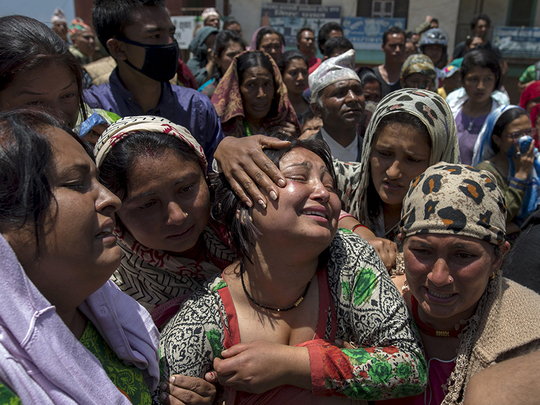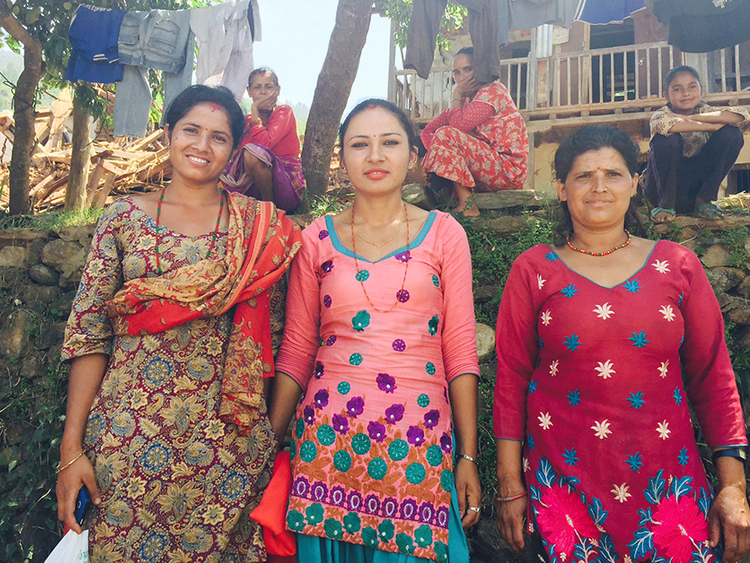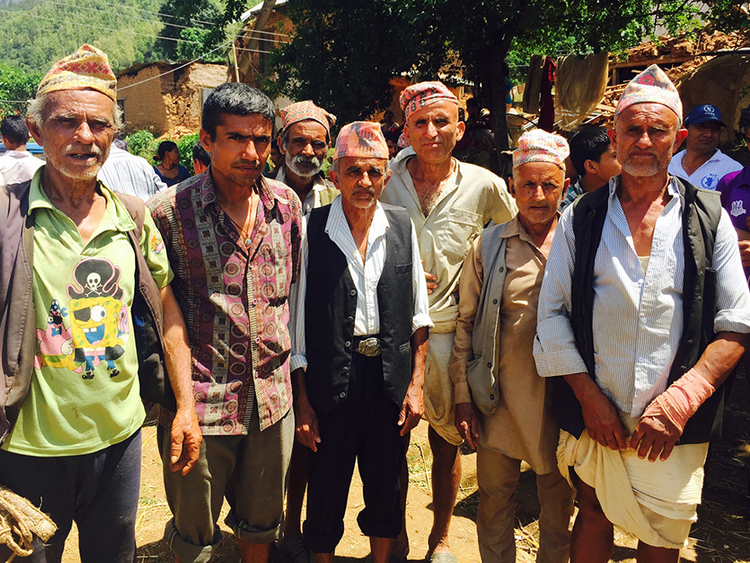
Kathmandu: Chandeni Mandan is a remote village tucked away in a rustic hilly area of Kavre district in Nepal. The April 25 earth quake has reduced the village to rubble, flattening hundreds of its mud houses.
Rebuilding them mostly depends on able-bodied young men. But Chandeni Mandan hardly has any. More than 70 per cent of their men are aged above 60.
The young had left years ago for jobs abroad, mostly to gulf countries, to provide for their families. But in this hour of crisis, their aged parents, wives and children are left to fend for themselves.
“My son is in Dubai. I don’t have anyone to help me rebuild my house. I am too old and weak,” Krishnabahadur Bujel, 64, told Gulf News.
Bahadur’s son, Raju Bujel, 31, is working for a construction company in Dubai since last three years.
“He said he cannot come because he does not have any leave,” said Bujel.
Gayathri’s husband Suresh Nepal went to Dubai four years ago, and he works as a scaffolding worker in Dubai. Last time he came to the village was just two months ago for his marriage. “I live with my in-laws who are old. I wish he were here to help us build a new house,” said Gayathri.
Chandeni Mandan has an estimated 1130 households and according to an UN WFP (World Food Programme), every other household has a male member who is working in the GCC or in the Middle East.
There is an estimated 300,000 Nepalese working in the UAE alone. “Saudi Arabia and Qatar have the highest number of Nepalese migrant workers that stands around 450,000 and 400,000 respectively,” Nepalese envoy to the UAE Dhananjay Jha said.
The Nepal Migration Survey carried out by the World Bank in 2009 estimates a total of 2.1 million Nepalis are working abroad, including in India. The Foreign Employment Department’s 2000 statistics show over 1,300 Nepalis are leaving the country for employment every day.
And almost half of Nepali households have at least one member working abroad or have a returnee. Most of them are aged between 20 and 44 years — the most productive workforce group.
In Chandeni Mandan, the male member working abroad is the sole earning member, and the money they send is keeping the pot boiling for these economically backward families.
But now, parents and wives feel the absence of their sons and husbands like never before.
The village has sustained massive scale destruction in the earth quake. 35 people died and dozens got injured while many livestock also perished. Most of the families are living in makeshift shelters and are dependent on food distributed by aid agencies.
“I feel helpless without him around. How much can I depend on my neighbours?” asked Devaki, 35 whose husband Kedar is in Saudi Arabia. She and her two children are living under a sheet along with five other families. Devaki does not have any brothers, and she lives with her husband’s aged parents and younger sister.
Likewise, 16-year-old Prathiba Parajuli also has no young male member in her family. Both her father and uncle work in Qatar. “It is very difficult for us. There is only so much my 66-year-old grandfather can do. He cannot even carry the sack of rice that we get as aid,” said Parajuli.
According to aid workers, more men are expected to migrate abroad in the coming months as they have lost everything. “Nepal has a strong migrant work culture. We should believe that more young men would want to leave the country looking for better opportunities,” said Hom Chhetri, who heads UN WFP’s food distribution in Kavre.
— The writer is a senior reporter with Xpress — a sister publication of Gulf News














